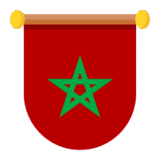Explore Islamic Architecture in Morocco
Morocco’s rich cultural heritage is reflected in its stunning architecture, shaped by centuries of diverse influences. With a unique blend of African, Arab, and European traditions, the country’s buildings are a testament to its strategic position between Europe, Africa, and the Middle East.
As we explore the intricate design and art that characterise Moroccan architecture, we uncover a world where functionality meets spiritual expression. From the majestic minarets to the intricate geometric patterns, every element tells a story of the country’s history and culture.
We will guide you through the evolution of this distinctive style, highlighting the key features that make Moroccan architecture so instantly recognisable and exploring the cultural significance behind these elements.
The Rich Heritage of Moroccan Architecture
As we explore the architectural landscape of Morocco, we uncover a complex history that reflects the diverse cultures that have shaped this North African nation. Moroccan architecture is a testament to the country’s rich heritage, influenced by various cultures and historical events.
Historical Influences Shaping Morocco’s Architectural Identity
The architectural identity of Morocco has been shaped by numerous historical influences, starting from the indigenous Berber people to the subsequent Arab and Islamic conquests.
Berber Foundations
The Berbers, the original inhabitants of Morocco, laid the foundation for the country’s architectural style. Their use of local materials and adaptation to the climate played a significant role in shaping the early architecture of the region.
Arab and Islamic Conquest
The Arab conquest in the 7th century introduced Islam and Arabic architectural elements, significantly influencing Moroccan design and art. This period saw the construction of mosques and other religious buildings that became central to Moroccan architecture.
The Unique Blend of Cultural Expressions
Moroccan architecture today is a unique blend of various cultural expressions, including the Moorish and French colonial influences.
Moorish Contributions
The Moors, who were Muslims from Spain and North Africa, brought with them sophisticated architectural techniques and decorative art. Their influence is evident in the intricate geometric patterns and the use of zellij tiles in Moroccan buildings.
French Colonial Impact
During the French colonial period (1912-1956), European architectural elements were introduced, adapting to Moroccan traditions and climate conditions. The French influence is visible in the large windows, flat roofs, and the development of new urban areas in cities like City Casablanca and Rabat, changing the urban style of Morocco. This period also saw the emergence of the Neo-Moorish style, which reinterpreted traditional Moroccan elements through a European lens.
In today‘s Morocco, the legacy of these historical influences continues to shape the country’s architecture, making it a fascinating country to explore for its rich cultural heritage and architectural diversity.
Key Elements of Islamic Architecture in Morocco
The essence of Moroccan Islamic architecture lies in its ability to seamlessly integrate geometric patterns, structural features, and serene gardens. This harmonious blend is a testament to the rich cultural and religious heritage of Morocco.
Geometric Patterns and Mathematical Precision
Moroccan Islamic architecture is renowned for its intricate geometric patterns and mathematical precision. These elements are not only aesthetically pleasing but also carry deep symbolic meanings.
Zellige Tilework
The use of zellige tilework is a hallmark of Moroccan architecture. These handcrafted, glazed tiles come in a variety of colours, tones, and shapes, each piece unique. The vibrant colours and geometric patterns on these tiles embody the Islamic emphasis on aniconism and abstract beauty.
Arabesque and Calligraphy
In addition to zellige tilework, arabesque and calligraphy play significant roles in Moroccan Islamic architecture. Intricate calligraphic inscriptions often adorn walls and ceilings, adding an extra layer of beauty and spirituality to the structures.
Structural Features
The structural features of Moroccan Islamic architecture are characterized by the use of horseshoe arches and domes. These elements not only provide structural support but also add to the aesthetic appeal of the buildings.
Horseshoe Arches and Domes
Horseshoe arches are a distinctive feature of many Moroccan mosques and palaces. These arches, often accompanied by domes, create a sense of grandeur and elegance.
Minarets and Courtyards
Minarets and courtyards are other essential elements of Moroccan Islamic architecture. Minarets serve as a visual focal point, while courtyards provide a serene and private space within the bustling cities.
Water and Gardens
The incorporation of water features and gardens is a key aspect of Moroccan Islamic architecture. These elements create a sense of tranquility and reflect the Islamic concept of paradise.
Fountains and Reflecting Pools
Fountains and reflecting pools are commonly found in Moroccan gardens and courtyards. They not only add visual beauty but also create a soothing atmosphere.
Paradise Gardens
The concept of paradise gardens is deeply rooted in Islamic tradition. These gardens, often divided into four quadrants with water channels, symbolize the four rivers of paradise described in Islamic texts. The selection of plants in these gardens combines practical considerations with symbolic meanings, creating a multisensory experience.
Magnificent Mosques and Religious Buildings
As we explore Morocco’s religious architecture, we discover a world of breathtaking beauty and spiritual significance. The country’s mosques and religious buildings are not only important historical landmarks but also vibrant centres of community life.
Hassan II Mosque in Casablanca
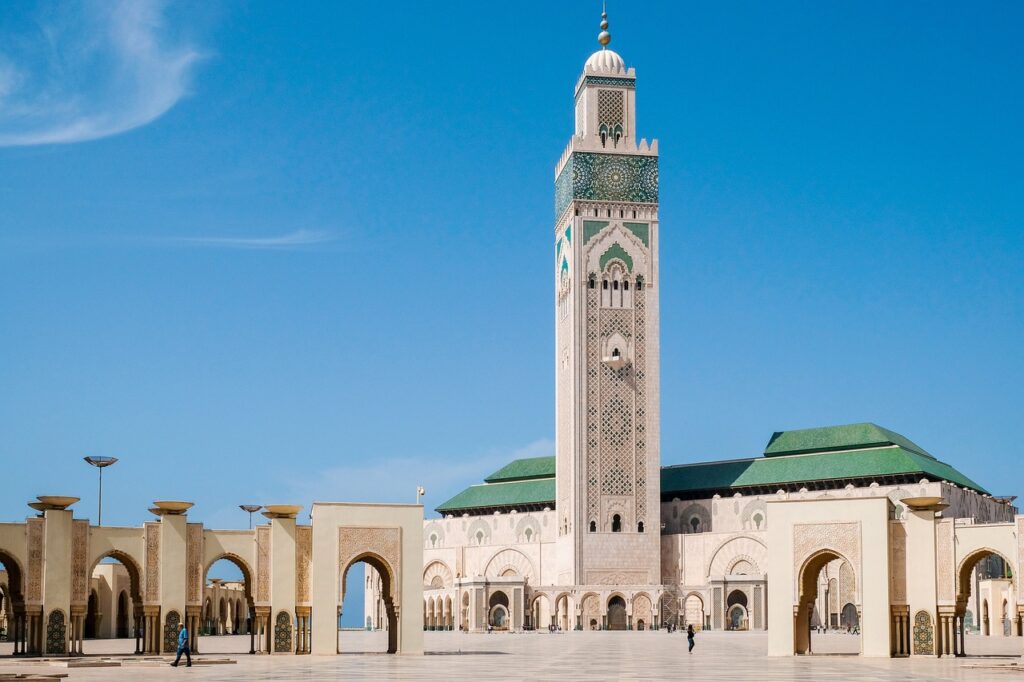
Architectural Marvels
The Hassan II Mosque is an exemplary model of modern Islamic architecture, boasting the highest minaret in the world and intricate stucco work throughout its interior.
Spiritual Significance
This magnificent mosque is not only a place of worship but also a symbol of Morocco’s rich cultural heritage, attracting visitors from around the world.
Koutoubia Mosque in Marrakesh
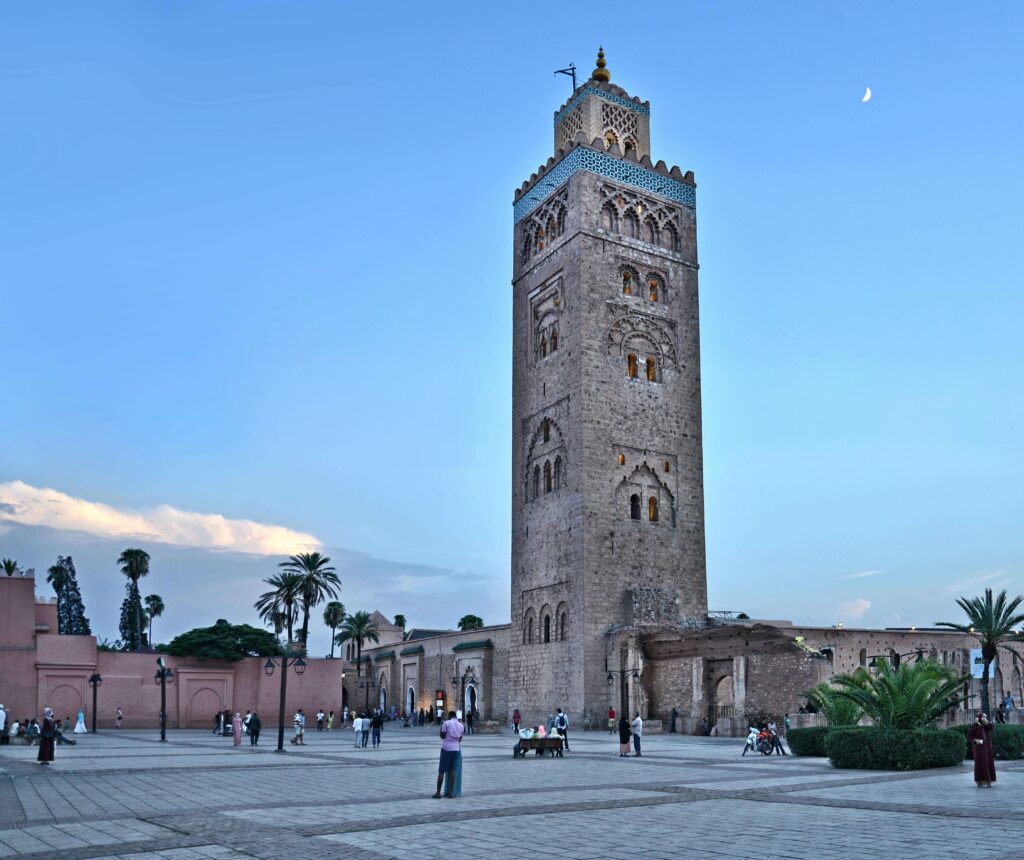
The Iconic Minaret
The Koutoubia Mosque’s minaret is a masterpiece of Almohad architecture, serving as a beacon for the city of Marrakesh and an iconic symbol of its rich history.
Historical Context
Built in the 12th century, the Koutoubia Mosque is one of the oldest and most important religious buildings in Marrakesh, reflecting the city’s cultural and spiritual heritage.
Ben Youssef Madrasa
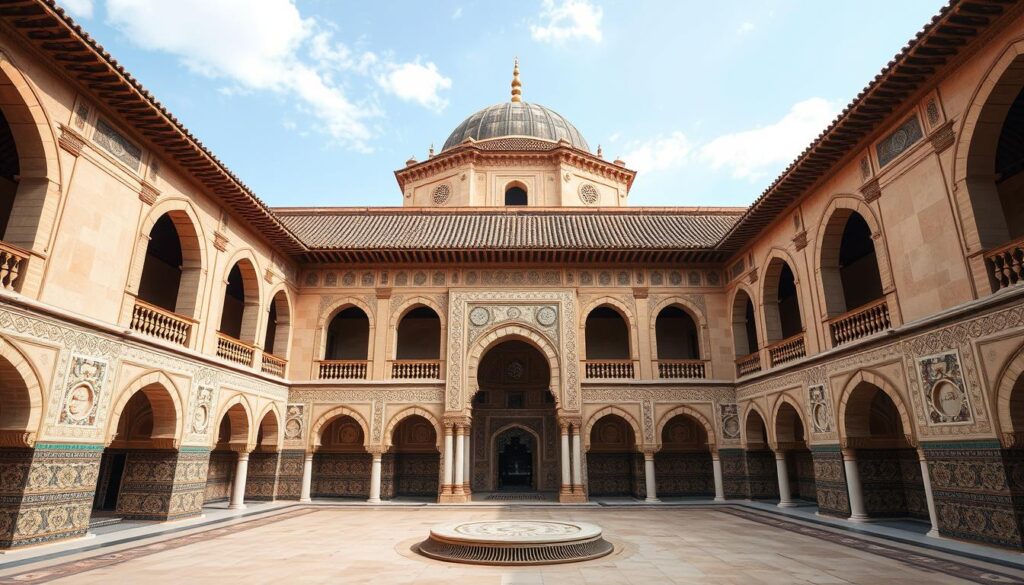
Educational Architecture
The Ben Youssef Madrasa is a prime example of Islamic educational architecture, featuring a beautiful central courtyard surrounded by intricate stucco work and ornate tilework.
Decorative Elements
The interior of the madrasa is adorned with exquisite art, including intricate carvings on the walls and ceilings, creating a serene and contemplative atmosphere.
Palaces and Domestic Architecture
As we explore the depths of Moroccan architecture, we uncover the intricate details that make its palaces and domestic buildings truly special. Moroccan homes and palaces are not just structures; they are reflections of the country’s rich history and cultural diversity.
Bahia Palace: A Masterpiece of Moroccan Design
Bahia Palace in Marrakesh is a stunning example of Islamic architecture, showcasing the finest craftsmanship of its time. Visitors can marvel at its beautiful courtyard and intricate interior decoration.
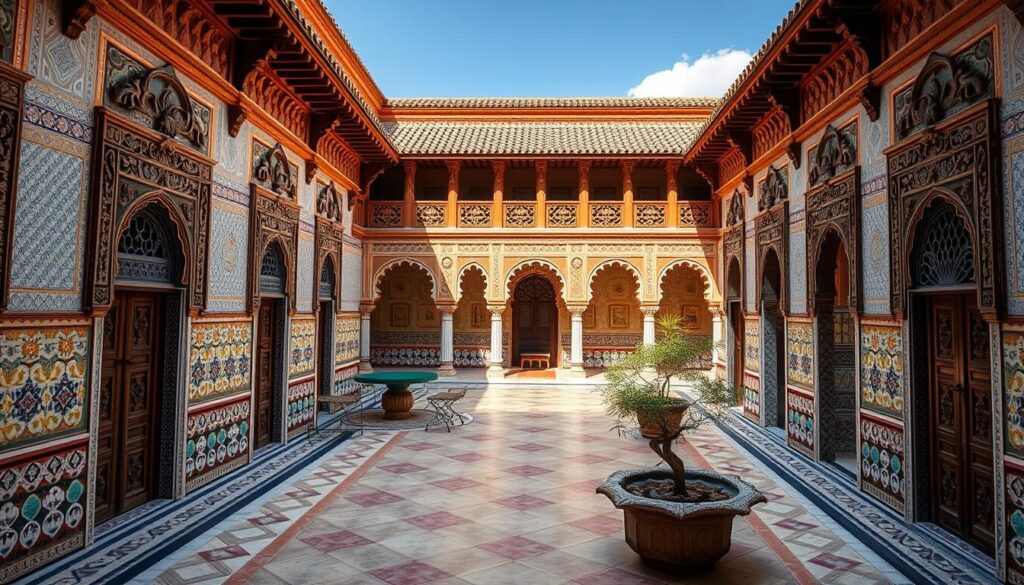
Courtyard Layout and Organisation
The courtyard is the heart of Bahia Palace, exemplifying traditional Moroccan design with its geometric patterns and serene atmosphere.
Interior Decoration
The interior of Bahia Palace is a masterpiece of craftsmanship, featuring intricate tile work, carved wood, and beautifully crafted ceilings.
Traditional Riads: The Heart of Moroccan Living
Traditional riads are quintessential Moroccan homes, characterised by their interior gardens and symmetrical architecture. Staying in an authentic riad is a unique way to experience Moroccan culture.
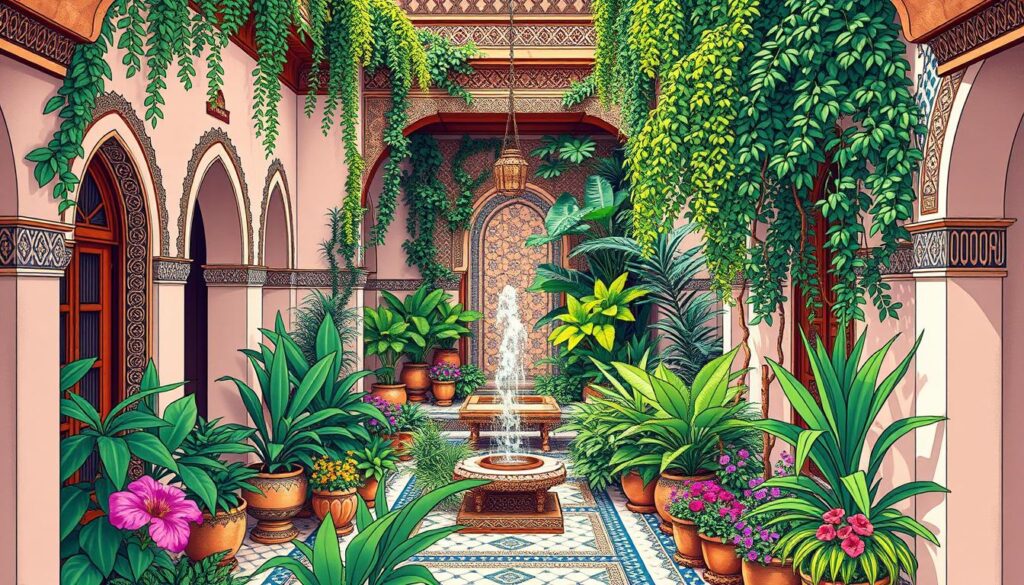
Structural Elements
Riads typically feature high ceilings, large windows, and beautifully tiled floors, creating a cool and serene living space.
Modern Adaptations
Today, many riads have been adapted into boutique hotels and guesthouses, offering visitors a chance to experience traditional Moroccan living with modern comforts.
Kasbahs and Fortifications
Kasbahs are fortified structures that played a crucial role in Morocco’s history, serving as both military strongholds and administrative centres. A visit to the Ait Benhaddou Kasbah is a journey back in time.
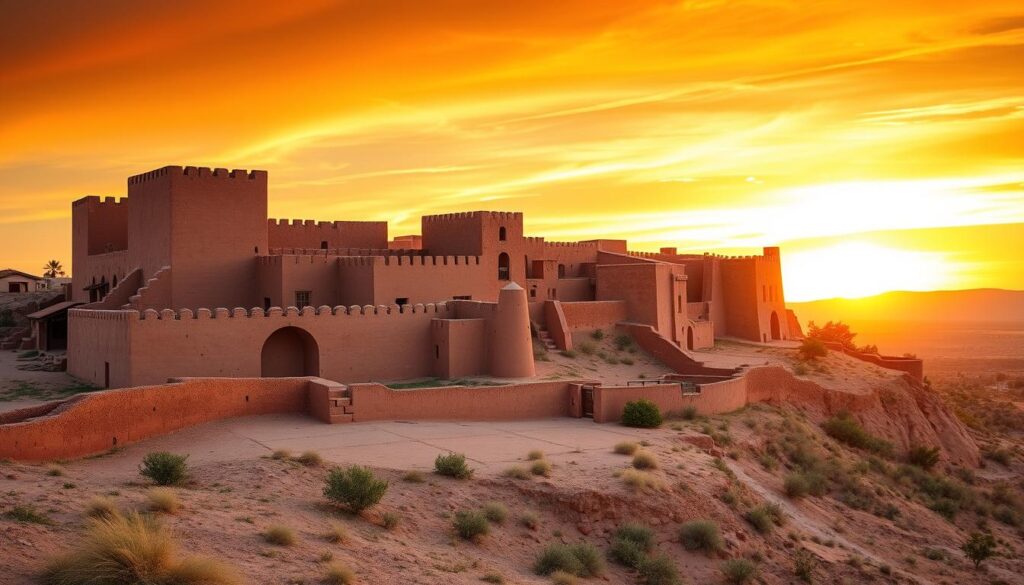
Desert Architecture
Kasbahs like Ait Benhaddou are remarkable examples of desert architecture, built using local materials such as clay and wood.
Defensive Features
These structures were designed with defence in mind, featuring high walls, narrow entrances, and watchtowers to protect against invaders.
The Enduring Legacy of Moroccan Islamic Architecture
As we explore the architectural landscape of Morocco, it becomes clear that Islamic architecture has left an indelible mark on the country’s cultural identity. The unique blend of Berber, Islamic, Moorish, and French influences has resulted in a rich heritage that is still celebrated today.
Moroccan architecture continues to influence contemporary design both within Morocco and around the world. The principles developed over centuries, including climate-responsive design and geometric harmony, offer valuable lessons for architects facing modern challenges.
Contemporary Moroccan architects are reinterpreting traditional forms and techniques, creating buildings that honour heritage while meeting modern needs. This blend of old and new is a testament to the timeless beauty of Moroccan islamic architecture, which continues to inspire and captivate people from around the globe.
The study of Moroccan architecture enriches our understanding of cultural exchange and adaptation, revealing how diverse influences can combine to create something uniquely beautiful and enduring. As we reflect on the legacy of Moroccan Islamic architecture, we are reminded of the importance of preserving our cultural heritage for future generations.
